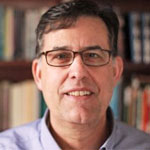 |
| Credit |
Building on the two previous posts regarding leadership development for church planting and revitalization in the book of Acts, this post will consider leadership development with the scattered saints. Logically, when the persecution in connection with Stephen’s death erupted (Acts 7:60–8:4), the scattered saints would have traveled to locations where they had some connection. Rodney Stark explains that the early spread of Christianity followed the lines of social networks, so that disciples connected with relatives or friends of friends, utilizing these relationships for gospel expansion. If Stark is correct, then the Hellenistic saints scattered from Jerusalem due to persecution made their way to Hellenistic communities, such as Antioch, where they networked for the sake of the gospel by establishing new churches. Luke narrates this movement of the gospel in Acts 8–12.
Philip’s Significance
While Luke does not detail the length of Philip’s service to the Hellenistic widows, and perhaps the broader congregation in Jerusalem, he does show the strong evangelistic gifts that he possessed. How did these gifts develop within the Jerusalem congregation? Luke offers no hint other than he was part of the scattered group that “went about preaching the word” (Acts 8:4), thus “had witnessed, observed and learned in Jerusalem what dynamic evangelistic outreach means,” as Eckhard Schnabel observes. Philip did not run from persecution but rather moved faithfully toward mission to the Samaritans. Having been nurtured in sound doctrine and exemplary preaching with the apostles in Jerusalem, and having been entrusted with service responsibilities by the church under the eyes of the apostles, he was equipped to preach Christ and plant churches beyond Jerusalem.
It appears evident that Philip’s understanding of ecclesiology intersected with his gospel proclamation. He preached, the Spirit worked, and a new congregation emerged (Acts 8:5–24). Going to an area without established Christian communities demanded that the aim in proclamation be to not only seek new disciples but also to form congregations that would baptize, teach, and nurture the new disciples.i
After leaving Samaria, and later, the Ethiopian eunuch, Luke comments, “Philip found himself at Azotus, and as he passed through he kept preaching the gospel to all the cities until he came to Caesarea” (Acts 8:40). This assumes that he preached in Azotus and then in the villages along the northern coastal route until he reached Caesarea, which likely included Jamnia, Lydda, Joppa, and Antipatris. His pattern would have not been simply to preach and to pass on without regard to Christ’s command (Matt 28:19–20), but rather to preach the gospel, make disciples, and plant churches. He had already demonstrated this pattern in Samaria. While Peter later went to Lydda and Joppa where he met with disciples—Luke’s synonym for churches (Acts 9:32–43), it seems likely that either Philip planted the congregations in these communities or he further strengthened the churches that had been previously planted by members of the Jerusalem church.
Evidence of Churches Established
Peter and John learned about ministry from the Lord Jesus who always had others about him so that he might mentor them in kingdom life and ministry. It seems likely that Luke mentions Peter and John, without specifying others traveling with them, since his usual practice seemed to focus on key characters, e.g. Peter, Barnabas, and Paul. Could there have been a team that traveled with Peter and John in the Samaritan villages (Acts 8:25) whom they had mentored for pastoral work in Jerusalem, and who they would have been comfortable leaving with new congregations to continue nurturing them in the faith? While Luke does not give us details on this speculation, by following the pattern that Jesus consistently practiced in training others, it seems logical that Peter and John would have done the same. This could mean that potential gospel ministers trained in Jerusalem under their tutelage became founding pastors of new congregations during this time of ministry.
The Acts 9 narrative gives strong evidence that a church had been earlier planted in Damascus (Acts 9:19). Saul congregated with this church that he had earlier intended to persecute. So a church had been planted there before Saul arrived to persecute them! C. K. Barrett states that the church planted in Damascus provides a valuable reminder that Acts does not offer a full record of the early years of the church’s expansion, but only a few carefully chosen events. The quiet expansion of new churches in the early church, though without fanfare, began through disciples trained, mentored, and honed in gospel work through the ministry of existing churches—whether in Jerusalem or in Galilee. No other explanation of their beginning appears plausible.
Antioch Church Planting
David Peterson rightly notes that the entire Antioch church got involved in commissioning Paul and Barnabas as missionaries. This begs the question of what part the Antioch Christian community played in shaping them for their mission work. Although both men were leaders in the church, involved in teaching for an entire year, such close discipling relationships are never one-way. Engaging others through teaching and interaction always sharpens ones teaching. Involvement in the congregation with all of the typical idiosyncrasies, problems, sin-issues, struggles with assurance, cultural baggage, and much more, likely helped to better prepare the two missionaries for what they would face in the Galatian region church planting. They learned more about serving Christ and building relationships among Gentiles by their time in the cosmopolitan Christian fellowship at Antioch. Intense congregational involvement continues to bear fruit in future church planters.
Leadership development in the Galatian region is not explained, just stated in Acts 14:23. After planting churches in Lystra, Iconium, and Pisidian Antioch, the mission team returned and “appointed elders for them in every church,” before returning to their sending church (Acts 14:26–28). They followed the same pattern evident in the Jerusalem church. If Derek Tidball correctly assesses the pattern of leadership in Acts, then it seems likely that Paul and Barnabas pointed the new elders in the direction of teaching truth, forming new communities of disciples, resolving inevitable conflict, and protecting the integrity of the gospel and the church. For their doctrinal teaching must have application in mission, relationships, and integrity. Obviously, the time to train leaders for such precision would have been brief but much would have been “caught” by the careful modeling by the missionaries in living out Christian life and ministry. The small beginning from the Antioch church led to the gospel reaching throughout the Roman Empire through Paul and other Christian workers.
Luke does not tell us who trained all of those involved in planting churches as the gospel spread outside Jerusalem. Yet the evidence points to local churches nurturing leaders who proclaimed Christ and planted
new congregations. That work must continue in our own day!




















